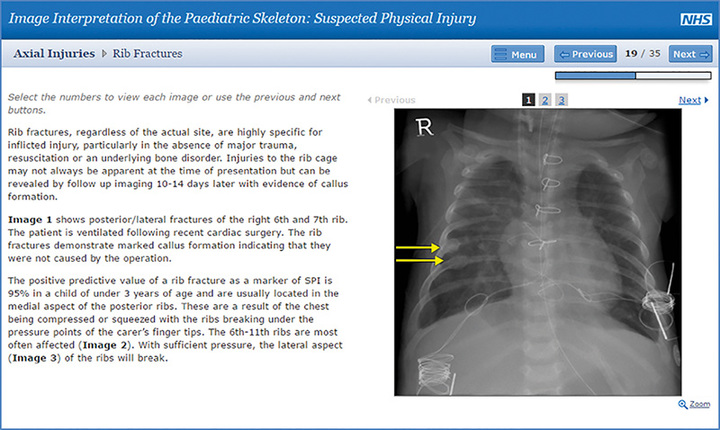The e-Learning for Healthcare Image Interpretation programme has revised the 12 sessions covering Non-Accidental Injury (NAI) in children.
Embracing the move to the new title of Suspected Physical Injury (SPI), the module consists of both instructional material and case studies to enable users to consolidate their knowledge before testing themselves in a real life scenario.
Donna Dimond, senior lecturer at the University of the West of England and editor of the Suspected Physical Injury modules, has developed the knowledge base around recent research findings and evidence based practice.
“The revised sessions have been developed in step with the soon to be released new standards from the Royal College of Radiologists and Royal College of Paediatrics and Child Health," Donna said.
“Child abuse and the recognition of such remains one of the biggest challenges to healthcare professionals working with children. The implications of correctly interpreting evidence of injury are far reaching and play a key part in decisions made about children’s future wellbeing.
“The instructional session uses labelling activities, interactive questions, and quizzes to include both frequently encountered and less common manifestations of abuse alongside conditions that may be mistaken for SPI," she continued.
“The case study session presents typically encountered situations and will enable the learner to make decisions based upon the clinical presentation, history given and images obtained. SPI may present as a coincidental finding when a child is imaged for other reasons and it is vital that professionals recognise telltale signs.”
Click to access the Suspected Physical Injury sessions.
More information about the e-LfH Image Interpretation programme is here.
